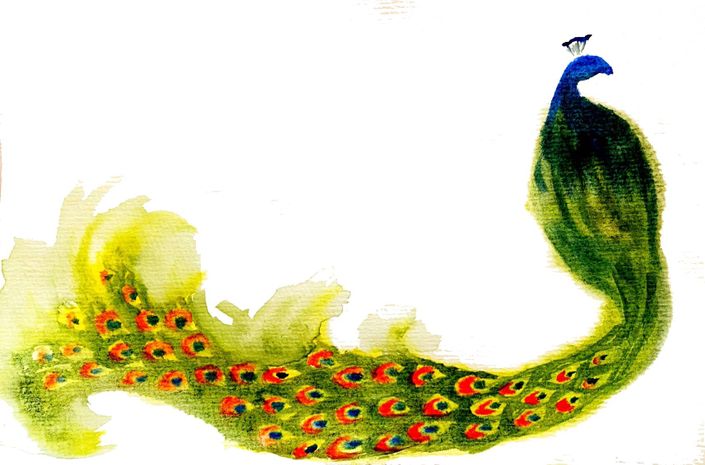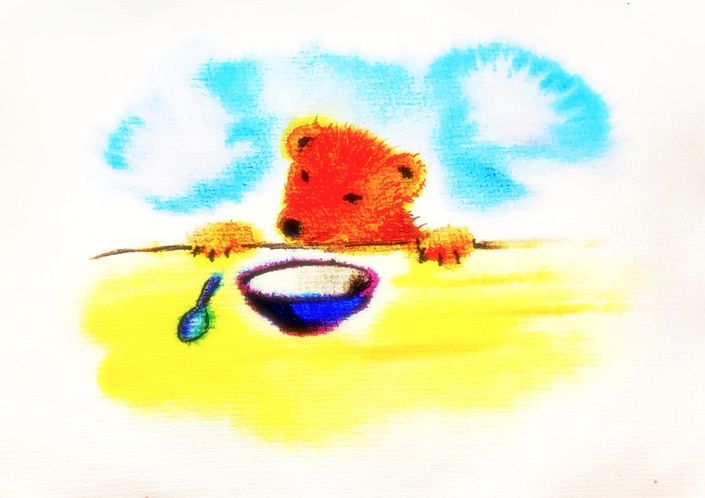What you will learn:
- How to use simple imaginations from stories, or other sources of your choice, to derive math lessons that will engage students with more interest and meaningfulness
- How to introduce and practice the four processes by using a character for each process
- How to relate the four processes to one another so that the child can see the mathematical activity in different ways
- How to work with patterns to reinforce their sense of order in the world and how that order is expressed in numbers
- How to use patterns to reinforce their familiarity with and memorization of math facts (up to twenty) and multiplication tables (1's, 2's, 3's, 4's, 5's, 10's, and 11's)
What you will receive:
- 36 Video Math Lessons--complete math lessons (derived from the 36 stories presented in 1st Grade Storytelling).
- Explanations for how to adjust these lessons to the abilities of the students
- A complete list of First Grade Math Goals from Simply Waldorf
- A complete First Grade Year Block Rotation--this can be used as a guideline or simply as an example. It will help you understand how the math and language arts blocks fit together over the course of a school year.
- Additional resources, video and PDF articles, to deepen your understanding of the course and of Waldorf education
What you will need:
- Block Crayons
- Colored Pencils
- At least 100 small objects, such as glass beads or pebbles for counting and using in problems
- Drawing Paper

First Grade Math
In Waldorf Education, we strive to bring our lessons out of stories and other imaginative sources. In these thirty-six lessons we will derive math activities and written work from the stories that are presented in the First Grade Storytelling Course. Unlike the Language Arts Course, the Math Course does not utilize the artwork as much. Instead this course will demonstrate over and over the ways that we can bring mathematical activities for the students to practice working with math patterns in ways that are connected to the stories they have heard and imagined. That connection of the activities and the written work to something they have lived into gives the lessons more meaning and more enjoyability.
The ability to count forward and backward by 2's, 3's, 4's, 5's, 10's, and 11's are very important skills to master in first grade. We will work with such patterns in all of the processes: addition, subtraction, multiplication, and division. As we do this, we learn to see the same patterns according to the view of certain characters. We will meet Prince Plus, Minister Minus, the Magician of Division, and Timothy Times. These characters give the child an imaginative access to seeing patterns differently. At the same time, the students learn to express these patterns differently as well. Each character sees and expresses things in different ways. With repeated examples of this, the students become more familiar with each process and they learn how the processes relate to one another.
So, along with these lessons, you will receive some math tips and tricks specific to first grade so that you will have things to help with the practice of skills outside of main lessons.
Important Note: A wise old Waldorf teacher once said that all subjects can be allowed to "go to sleep" for a while--all except math. Other subjects can sleep for a few weeks and then re-awaken. However, math does not re-awaken. If it "goes to sleep", then math dies. I have to admit that my teaching years have verified this statement. What does that mean on the most practical level? We must practice math everyday. It does not get the weekend off. It does not go on summer vacation. This message is included to emphasize just how important the addition of tricks and tips will be for you and your student(s). The thirty-six lessons included in this course are for main lessons. However, there is much more to do in order to develop the habits, the memorization, and the skills that need to be mastered by the end of first grade. If you develop a daily habit of twenty minutes of practice, this will be every bit as valuable to them as anything learned in the main lessons.
You will see, as you work through the lessons, that there are times that a couple of lessons are derived from one story, rather than each lesson corresponding to each story presented in the First Grade Storytelling course. As you will hear it presented, sometimes the teacher must consider the benefits of returning to a story for another lesson because the number work fits so well and weigh those benefits against the benefits of moving on to a new story. This only happens a handful of times in this course. For the most part, each lesson is derived from a new story. Still, it is important to see that there is some flexibility for the teacher to find lessons.
Course Curriculum
- How to Use These Video Lessons (7:16)
- What is a "Simply Waldorf" course? (3:44)
- Main Lesson and the Main Lesson Block (8:10)
- A First Grade Block Rotation
- Setting Up a Homeschool Classroom (19:56)
- "First Grade Math" Introduction and Overview
- 1st Grade Timeline for Practicing Skip Counting
- Resources for Stories Used in this Course
- A Note About "Subitizing"
- Lesson 1: Frog Prince (16:31)
- Lesson 2: Frog Prince (11:04)
- Lesson 3: Frog Prince (10:57)
- Lesson 4: Wolf and Seven Kids (13:46)
- Lesson 5: Wolf and Seven Kids (14:20)
- Lesson 6: Twelve Brothers (19:59)
- Lesson 7: Twelve Brothers (11:40)
- Lesson 8: Twelve Brothers (10:28)
- Lesson 9: Red Riding Hood (7:32)
- Lesson 10: Red Riding Hood (8:11)
- Lesson 11: Little Red Riding Hood (7:50)
- Lesson 12: Language of Animals (10:04)
- Lesson 13: Language of Animals (9:40)
- Lesson 14: Shoemaker and Elves (12:55)
- Lesson 15: Shoemaker and Elves (9:56)
- Lesson 16: Shoemaker and Elves (15:14)
- Lesson 17: The Queen Bee (9:30)
- Lesson 18: The Queen Bee (8:51)
- Lesson 19: Bremen-town Musicians (17:18)
- Lesson 20: Bremen-town Musicians (7:14)
- Lesson 21: Review Math from First Block (20:17)
- Lesson 22: Hansel and Gretel (16:14)
- Lesson 23: Hansel and Gretel (8:43)
- Lesson 24: Lazy Jack (15:35)
- Lesson 25: Lazy Jack (11:01)
- Lesson 26: Salt and Bread (12:33)
- Lesson 27: Salt and Bread (11:47)
- Lesson 28: Salt and Bread (17:47)
- Lesson 29: Old Woman Who Lost Her Dumpling (10:01)
- Lesson 30: Old Woman Who Lost Her Dumpling (16:29)
- Lesson 31: The Bul-Bul Bird (10:30)
- Lesson 32: The Bul-Bul Bird (13:00)
- Lesson 33: The Bul Bul Bird (11:27)
- Lesson 34: Half Chick (12:54)
- Lesson 35: Half Chick (7:26)
- Lesson 36: Crab (7:31)
- Lesson 37: Crab (11:09)
- Lesson 38: Crab (7:34)
- Lesson 39: The Donkey Driver and the Thief (32:48)
- Lesson 40: The Donkey Driver and the Thief (12:52)
- Lesson 41: Review from previous math block (week 16) (11:27)
- Lesson 42: The Three Wishes (11:48)
- Lesson 43: The Three Wishes (18:12)
- Lesson 44: Anansi and the Hat-Shaking Dance (27:25)
- Lesson 45: Anansi and the Hat-Shaking Dance (14:02)
- Lesson 46: Goldilocks and the Three Bears (25:46)
- Lesson 47: Goldilocks and the Three Bears (11:41)
- Lesson 48: Goldilocks and the Three Bears (11:42)
- Lesson 49: Fire on the Mountain (28:10)
- Lesson 50: Fire on the Mountain (12:56)
- Lesson 51: The Hunter and His Magic Flute (29:08)
- Lesson 52: The Hunter and His Magic Flute (8:38)
- Lesson 53: The Hunter and His Magic Flute (8:34)
- Lesson 54: The Stonecutter (9:31)
- Lesson 55: The Stonecutter (9:34)
- Lesson 56: Urashima (33:23)
- Lesson 57: Urashima (9:58)
- Lesson 58: Urashima (7:27)
- Lesson 59: Lion Once Flew (5:26)
- Lesson 60: Lion Once Flew (13:40)
- Bonus Lesson : Lion Once Flew (14:20)
- Lesson 61: Simple Wang (8:45)
- Lesson 62: Simple Wang (17:35)
- Lesson 63: Simple Wang (11:12)
- Lesson 64: The Clever Thief (22:37)
- Lesson 65: The Clever Thief (9:50)
- Lesson 66: Why Sun and Moon Live in the Sky (6:29)
- Lesson 67: Why Sun and Moon Live in the Sky (5:33)
- Lesson 68: Why Sun and Moon Live in the Sky
- Lesson 69: The Tiger's Whisker (19:15)
- Lesson 70: The Tiger's Whisker (10:17)
- Lesson 71: Mister Lazy-Bones (14:38)
- Lesson 72: Mister Lazy-Bones (12:31)
- Lesson 73: Mister Lazy-Bones (9:43)
- Lesson 74: The Tiger, Brahman, and Jackal (17:14)
- Lesson 75: The Tiger, Brahman, and Jackal (16:32)
- Lesson 76: The Monkey and the Crocodile (26:10)
- Lesson 77: The Monkey and the Crocodile (10:20)
- Lesson 78: The Monkey and the Crocodile (9:06)
- Lesson 79: Jack and the Beanstalk (25:56)
- Lesson 80: Jack and the Beanstalk (7:03)
- Lesson 81: Jack and the Beanstalk (10:53)
- Lesson 82: Younde Goes to Town (14:32)
- Lesson 83: Younde Goes to Town (12:41)
- Lesson 84: The Deserted Children (8:17)
- Lesson 85: The Deserted Children (6:14)
- Lesson 86: The Pied Piper (20:15)
- Lesson 87: The Pied Piper (6:07)
- Lesson 88: The Pied Piper (5:29)
- Lesson 89: Gudbrand on the Hillside (5:08)
- Lesson 90: Gudbrand on the Hillside (21:57)
Featured First Grade Courses
You also might be interested in our other First Grade Courses or consider our core course bundle which includes First Grade Stories, First Grade Math, First Grade Language Arts and a bonus course, First Grade Math Tips and Tricks.
First Grade Core Bundle
Our bundle includes First Grade Stories, First Grade Language Arts, First Grade Math , and a bonus course, First Grade Math Tips and Tricks.




